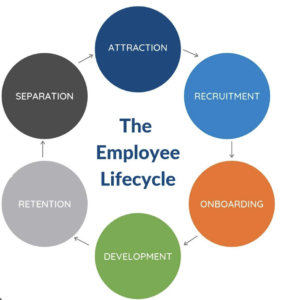As we move into 2025, UK employers face a shifting economic landscape, alongside new regulations and policies set to shape the workplace. Following the Autumn Statement by Chancellor Rachel Reeves and the upcoming Employment Rights Bill, it’s crucial for businesses to prepare for these changes. Here are the key priorities for UK employers in 2025, and what they should focus on:
Prepare for changes in employment rights
The new Employment Rights Bill will introduce significant changes that affect how businesses manage their workforce. Some key provisions include:
- Stronger protections for workers. Expect changes to enhance job security and workplace conditions, including clearer and more stringent rules around unfair dismissal claims and redundancy.
- Extended sick leave and pay. The bill may introduce more generous sick pay entitlements, so employers should review their current sick leave policies.
- Flexible working. Employers must prepare for increased demand for flexible working options, with new rights potentially making it easier for employees to request remote work or flexible hours.
- Non-compete clauses. New rules could impact the enforceability of restrictive covenants, requiring employers to reassess their contracts and policies.
Address the cost of living crisis
The UK economy is still grappling with the effects of inflation, with many workers facing rising living costs. Employers should:
- Offer competitive wages. The government is under pressure to address wage stagnation. Companies should ensure they are offering competitive salaries, or consider cost-of-living adjustments for employees.
- Support staff wellbeing. Mental health and employee wellbeing are becoming a priority for businesses. Employers can consider offering wellness programs or increasing access to mental health support.
- Consider benefits packages. Reevaluate your benefits offerings, such as bonuses, retirement plans, and other perks, to ensure they remain attractive to current and potential employees.
Be ready for economic uncertainty
The UK economy remains uncertain, with global inflation, energy prices, and post-Brexit changes creating challenges. Employers should:
- Plan for economic fluctuations. Create flexible business plans that can be adapted if the economy worsens. This might include managing cash flow more conservatively, reducing unnecessary overheads, or diversifying your revenue streams.
- Focus on business resilience. Build resilience by strengthening your supply chains, diversifying talent pools, and reducing dependence on any one market or sector.
- Engage in strategic forecasting. Regularly monitor economic trends, political developments, and changes in consumer behavior to stay ahead of potential disruptions.
Prepare for more scrutiny around workplace culture
As public and government expectations evolve, businesses are under greater scrutiny about their workplace cultures. Employers should:
- Promote diversity and inclusion. Demonstrating a commitment to diversity and inclusion isn’t just good for business; it’s becoming a regulatory and ethical necessity. Make sure your company policies reflect these values and are communicated effectively.
- Strengthen employee engagement. Engage with employees to understand their needs, concerns, and aspirations. Companies with strong employee engagement are more likely to thrive during economic challenges.
Workforce optimisation
For many organisations, optimising staffing levels will be top of the agenda in 2025. For some, the focus will centre on attracting new talent to support organisational growth plans and address skills shortages. This will involve improving recruitment processes, methods and channels. Meanwhile, other organisations will focus on recalibrating their workforce through restructures to align with changing business needs or to reduce costs. Whether hiring or resizing, employers need to ensure that workforce planning supports long-term organisational objectives.
Focus on skills and training for the future
The UK’s skills gap is a persistent challenge, and the government has indicated a focus on improving workforce skills. Employers should:
- Invest in training programs. Upskilling your employees will be crucial in 2025. Offering continuous professional development (CPD) opportunities can improve staff retention and fill gaps in essential skills.
- Support apprenticeships. In line with government priorities, consider investing in apprenticeship schemes to build a pipeline of skilled workers while supporting the broader economy.
Ensure fair pay and pay transparency
Pay transparency and fairness are expected to be high on the government’s agenda in 2025. Employers should:
- Review pay structures. Conduct pay audits to ensure equal pay for equal work, especially for gender, ethnicity, and other underrepresented groups.
- Prepare for potential reporting requirements for employers with 250 or more employees. The government may introduce pay transparency measures, be ready to disclose pay gaps and ensure your organisation is ahead of the curve.
- Be proactive on diversity and inclusion. In 2025, businesses will be under increased pressure to ensure their recruitment, promotion, and compensation practices are equitable and transparent.
Adapt to new workplace technologies
The future of work is digital, and the UK government is investing heavily in technology. Employers need to:
- Invest in digital skills. Employees will need new tech skills as automation, AI, and digital platforms become more common in the workplace. Provide upskilling opportunities, especially for employees in roles that could be affected by technology.
- Update IT infrastructure. Ensure your business has the digital tools necessary for remote working, cybersecurity, and effective collaboration. Consider investing in cloud solutions and cybersecurity measures to protect sensitive data.
- Leverage automation. Review areas where technology can automate repetitive tasks, improving efficiency and allowing employees to focus on higher-value activities.
In 2025, UK employers will face a rapidly changing landscape of regulatory and economic challenges. By focusing on these priorities businesses will be better positioned to thrive in the evolving economy. Staying ahead of these trends and taking proactive measures will help you create a strong, resilient, and future-proof business. If you need any support or advice in any of these areas, please get in touch.


Recent Comments